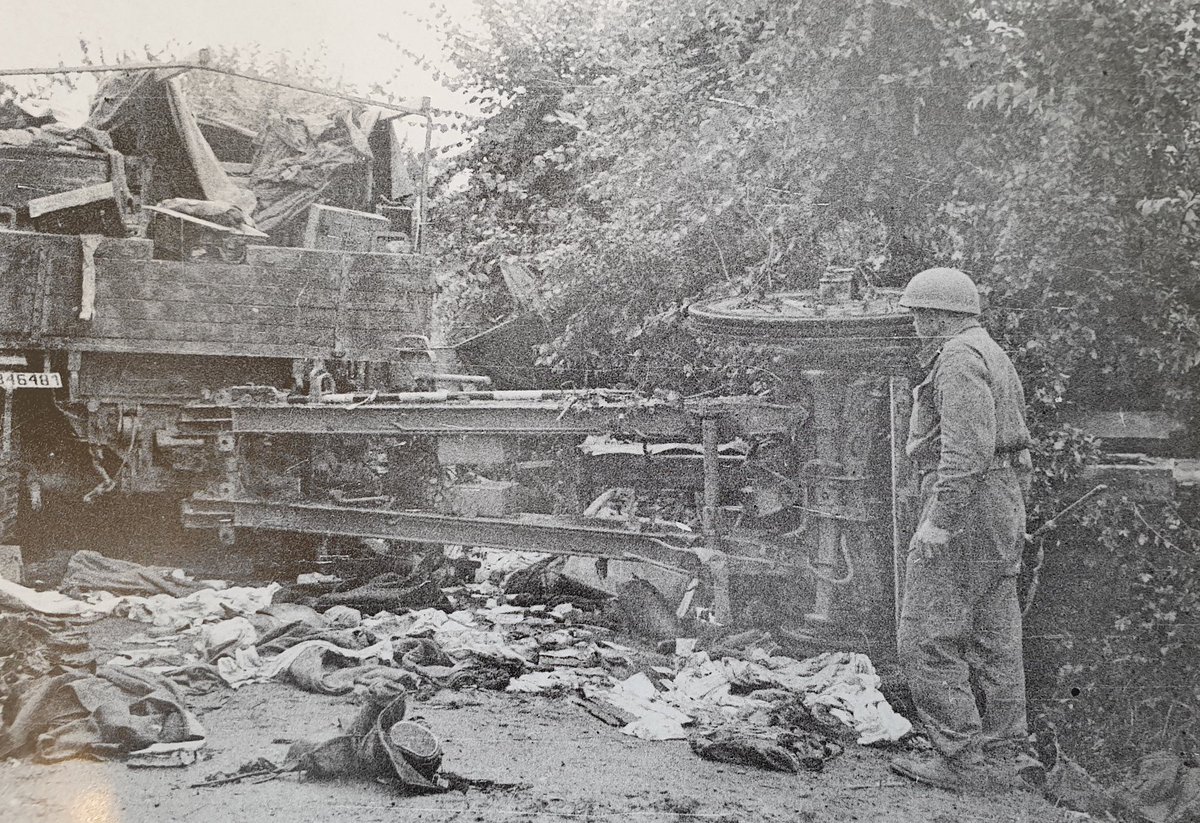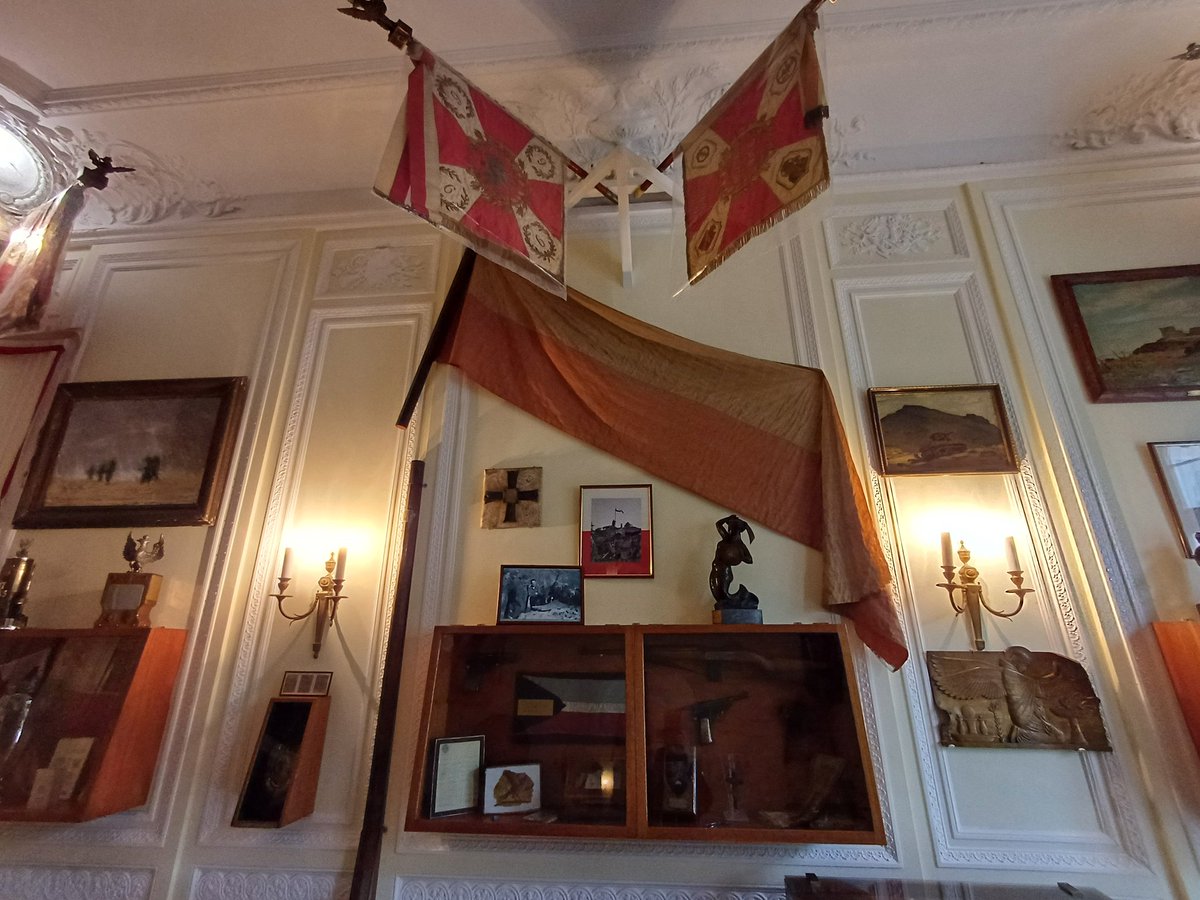#OTD 19th Aug '44
Day 1 of the Battle for Hill 262: #Maczuga
"There was confusion among the German columns; huge trucks filled with troops, guns drawn by six-horse teams, staff cars, recon half-tracks and two enormous assault guns.
I gave the order: "Fire!"
1/
#WW2
#Maczek
Day 1 of the Battle for Hill 262: #Maczuga
"There was confusion among the German columns; huge trucks filled with troops, guns drawn by six-horse teams, staff cars, recon half-tracks and two enormous assault guns.
I gave the order: "Fire!"
1/
#WW2
#Maczek

2/
Following Von Kluge's order of 16th August for a German retreat from the West, the Allied troops focused on trapping the retreating units within the 'Falaise Pocket'.
The Polish 1st Armoured Division under Maczek was crucial - "the cork in the bottle", in Monty's words.
Following Von Kluge's order of 16th August for a German retreat from the West, the Allied troops focused on trapping the retreating units within the 'Falaise Pocket'.
The Polish 1st Armoured Division under Maczek was crucial - "the cork in the bottle", in Monty's words.

3/
Maczek reorganised his Division into two all-arms battlegroups: the first tasked with capturing and holding Chambois and the other to seize Hill 262: two peaks astride the only escape route the Germans could exploit - beyond the strength of the Allies, Model assumed.
Maczek reorganised his Division into two all-arms battlegroups: the first tasked with capturing and holding Chambois and the other to seize Hill 262: two peaks astride the only escape route the Germans could exploit - beyond the strength of the Allies, Model assumed.

4/
Maczek noticed that the shape of the two hills above Coudehard resembled a bone, or a club, a mace - and thus the name 'Maczuga' was born.
When the order came to seize Maczuga, the 1st Armoured Division was already exhausted and short of supplies.
Maczek noticed that the shape of the two hills above Coudehard resembled a bone, or a club, a mace - and thus the name 'Maczuga' was born.
When the order came to seize Maczuga, the 1st Armoured Division was already exhausted and short of supplies.

5/
They seized the hill from a company of German infantry, and were in position when the first of many German columns passed beneath the Polish artillery, tanks and machine guns.
Launay describes how "in panic, men abandoned their equipment, then they took to their legs..."
They seized the hill from a company of German infantry, and were in position when the first of many German columns passed beneath the Polish artillery, tanks and machine guns.
Launay describes how "in panic, men abandoned their equipment, then they took to their legs..."

6/
"...to save themselves. The bodies of men and horses strewed the road. When the night came, the smoke of burning war materiel was so dense and impenetrable that visibility was reduced to nil."
The Poles secured many prisoners, but the blocked road cut off their supply route.
"...to save themselves. The bodies of men and horses strewed the road. When the night came, the smoke of burning war materiel was so dense and impenetrable that visibility was reduced to nil."
The Poles secured many prisoners, but the blocked road cut off their supply route.

7/
By 19.00 it was clear that neither the Canadians nor Americans could provide assistance.
The Polish battlegroup consisted of 2 Armoured Regiments, 3 Infantry Battalions, c.1500 men and 80-90 tanks, supported by towed anti-tank guns and tracked anti-aircraft tanks.
By 19.00 it was clear that neither the Canadians nor Americans could provide assistance.
The Polish battlegroup consisted of 2 Armoured Regiments, 3 Infantry Battalions, c.1500 men and 80-90 tanks, supported by towed anti-tank guns and tracked anti-aircraft tanks.

8/
They faced assaults from all sides, from the 1000s of desperate Germans fleeing east, who were still capable of forming effective battlegroups, and from the II SS-Panzerkorps, outside the pocket.
The Poles' "only advantage"? The Germans could not coordinate their assaults
They faced assaults from all sides, from the 1000s of desperate Germans fleeing east, who were still capable of forming effective battlegroups, and from the II SS-Panzerkorps, outside the pocket.
The Poles' "only advantage"? The Germans could not coordinate their assaults

9/
A key feature of the defence of Hill 262 was the absence of an overall commander. The senior officer was Szydlowski but, as Jarzembowski points out, he had neither the time nor communication resources to direct events.
Each unit operated independently within its own sector.
A key feature of the defence of Hill 262 was the absence of an overall commander. The senior officer was Szydlowski but, as Jarzembowski points out, he had neither the time nor communication resources to direct events.
Each unit operated independently within its own sector.
10/
Major Stefanowicz, as reported by (the rather literary) Capt Sévigny, addressed his men:
"Gentlemen, the hour is grave. The brigade is completely isolated. The enemy is still fighting: his only escape routes are those you see to the right and left."
...
Major Stefanowicz, as reported by (the rather literary) Capt Sévigny, addressed his men:
"Gentlemen, the hour is grave. The brigade is completely isolated. The enemy is still fighting: his only escape routes are those you see to the right and left."
...

11/
"...There is nobody except us who can stop them.
Surrender is out of the question! As Poles!
The infantry will hold the lower ground and will withdraw to the higher ground only in the last resort; the tanks will remain here, with engines stopped to save petrol."
"...There is nobody except us who can stop them.
Surrender is out of the question! As Poles!
The infantry will hold the lower ground and will withdraw to the higher ground only in the last resort; the tanks will remain here, with engines stopped to save petrol."

12/
From midnight, "we heard explosions and the cries of the wounded. Firing broke out on the left, then on the right. The enemy was attacking everywhere at the same time. At the foot of Coudehard hill, there was bloody hand-to-hand fighting all night. We lost many men."
From midnight, "we heard explosions and the cries of the wounded. Firing broke out on the left, then on the right. The enemy was attacking everywhere at the same time. At the foot of Coudehard hill, there was bloody hand-to-hand fighting all night. We lost many men."

As dawn breaks on the 20th August, the Poles, utterly exhausted and lacking food and water, are still 36 hours away from reinforcements and supplies - and about to enter "le jour de crise", in Maczek's words. 

@HGWDavie Jarzembowski quotes 351 killed @ Maczuga, 1000 wounded, 114 missing.
For the Normandy campaign, 1441 casualties - 325 killed.
For the campaign in NW Europe - 5097 casualties, 1294 killed.
McGilvray gives 1450 casualties for Falaise, 20% of combat strength
But no sources?🤷♀️
For the Normandy campaign, 1441 casualties - 325 killed.
For the campaign in NW Europe - 5097 casualties, 1294 killed.
McGilvray gives 1450 casualties for Falaise, 20% of combat strength
But no sources?🤷♀️
• • •
Missing some Tweet in this thread? You can try to
force a refresh















